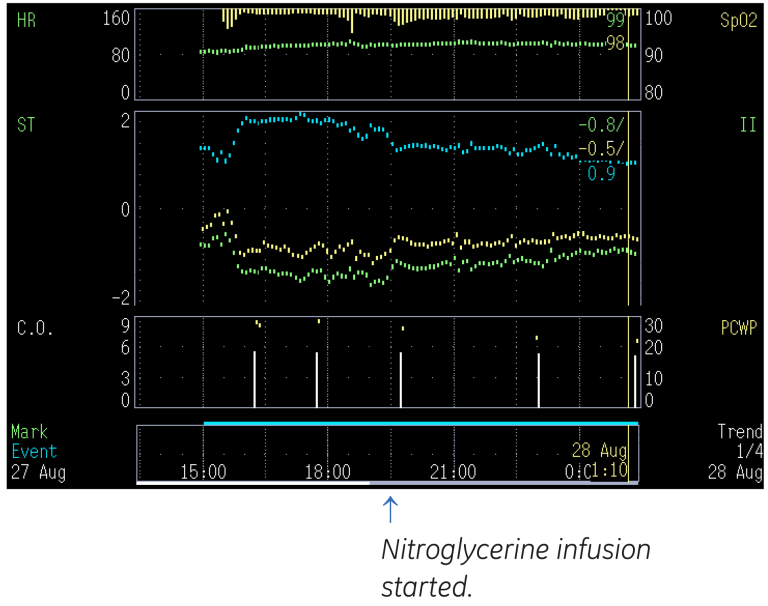
Jouko Laurila, M.D.
Tero Ala-Kokko, M.D.
Dept. of Anesthesiology, ICU
Oulu University Hospital
Case History
An 81-year old male with recent myocardial infarction came to the hospital with ischemic pulmonary edema and acute abdominal symptoms.
A laparatomy was performed due to volvulus of the sigma.
Postoperatively he was admitted to the ICU with septic shock requiring dobutamine and noradrenaline infusions.
Special Findings
In the screen shown above, the yellow dots in the lowermost graph indicate measured PCWP values, and the white bars show cardiac output in L/min. During the first ICU evening, a rise in PCWP up to 20-28 mmHg together with marked ischemic changes on the ECG tracing were noted. The ST trend (in the middle of the figure) demonstrates clear 1-2 mm ST elevation, and there is also ST depression in the reciprocal ECG leads.
Conclusions
The above trend changes are a clear signs of myocardial ischemia, and the rapid response achieved with a nitroglycerine infusion.
In this case, monitoring ST segment trends made rapid detection of myocardial ischemia possible.








